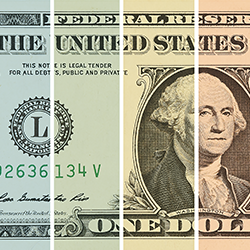Traditional lead-qualifying questions are fine – if you're looking for traditional answers. But what if your inquiries could deliver more than straightforward budget, authority, needs, and timeline info, aka BANT? EXHIBITOR spoke with three experts who've written and tested thousands of lead-qualifying queries: Peter Gillett, CEO at Zuant; Matt Hill, president of The Hill Group; and Ken Mortara, CEO of ShowValue Inc. They offered up some of their favorite unconventional questions that deliver more insight than basic BANT-related inquiries. By Linda Armstrong
A question like this will probably elicit responses linked to budgets or time frames. "But you are also likely to uncover issues or requirements that aren't addressed by your traditional BANT qualifiers," Hill says. For example, you might learn that the attendee is concerned about how your service will integrate with existing products, the prospect's management team is leery of your brand, or this person's boss favors a competitor. No matter the answer, you will have gained valuable insight to guide your conversation and to aid sales reps after the show.


"Granted, this question actually makes your visitors think about competitors' names and products, which can be detrimental, especially if your offering falls short," Mortara says. "However, attendees' answers will help you redirect in-booth and post-show conversations to highlight competitive advantages – assuming that you have them – and they could help you suss out inauthentic buyers." Sometimes prospects have already picked a supplier and are simply performing due diligence. By carefully listening to their responses and probing about existing relationships, staffers can likely determine whether a hot lead is actually a cold waste of sales reps' time.


This query doesn't just identify prospects' needs; it also quickly identifies their most urgent pain points. That is, while other questions might generate a list of reasons why visitors need your product, this one illuminates the main factor driving their purchasing decision, Hill says. Armed with this info, you can refocus your discussion around how your company's offering can best meet this most pressing need.
Employing a bit of sales psychology, this option forces attendees to think in worst-case scenarios, effectively envisioning their lives without your company's product or service and the calamities that might befall them as a result. "As such, it further motivates them to buy and likely increases their eagerness to do so," Hill says. "In the meantime, it also provides insight into your prospects' biggest headaches and pain points, which, again, can guide your conversations during and after the show and deepen the relationship."


You'll get a whole host of valuable responses from this probe. "Answers will reveal what this prospect thinks of your brand and will thus give you an opportunity to address any negative or false perceptions that might otherwise have remained hidden and potentially hindered a sale," Gillett says. What's more, this question will alert your company to existing attitudes within the market that need to be addressed via messaging, advertising, and more. While talking about your firm's weaknesses might seem counterintuitive, it can provide valuable intelligence to use on the show floor and back at the office.


"You can uncover a ton of information with this question," Hill says. For example, the prospect might reveal your product will save his or her company money or time, offer advantages over the competition, foster a positive brand impression, etc. Answers can help guide your conversations to better assist customers in justifying the purchase within their own minds or those of company stakeholders. Plus, answers can point out the areas where customers already understand your product's value, thereby illustrating other factors or key differentiators you might want to highlight that aren't yet on their radar.


Assuming you're not speaking with the final decision-maker, this question can help you identify who holds the reins at the prospect's home office, which can provide your salespeople with a second, perhaps more qualified lead within the firm, Mortara says. In addition, it can tip you off as to whether your hot ticket is standing right in front of you or if there will be a whole slew of stakeholders involved, which could delay the buying process.


Answers will vary widely but can offer valuable insight. For example, one prospect will ask you to cut your prices, another may suggest you talk to his or her procurement team, and someone else might tell you there's nothing you can do but wait. "No matter the outcome, you've learned something about what's holding up a sale and potentially how hot that lead is in actuality," Hill says. That is, leads may say all the right things, but when you ask to proceed with the last steps before a purchase, some will back away, revealing their lack of pressing motivation to finalize the sale and sign on the dotted line.


The answer to this question will reveal the roadblocks that may have stopped a purchase in the past, allowing you to guide your conversation in a manner geared toward removing those obstacles immediately. Also, prospects' answers will deliver some insight regarding their current sense of urgency and buying plans, Mortara says. If these perceived hurdles have blocked purchases for years, then perhaps prospects are not as ready to buy as they may have led you to believe.


"People most often buy products and services in hopes of increasing productivity or reducing their expenses," Gillett says. "So getting them to focus on one or the other, instead of becoming
mired in myriad less-critical factors, can help both of you cut to the chase and identify the key driving factor behind the purchase." Doing so enables you or your booth staff to zero in on how your particular product or service can meet this one critical need. Knowing what's most important will also help your sales reps' tailor their post-show follow-ups.



























